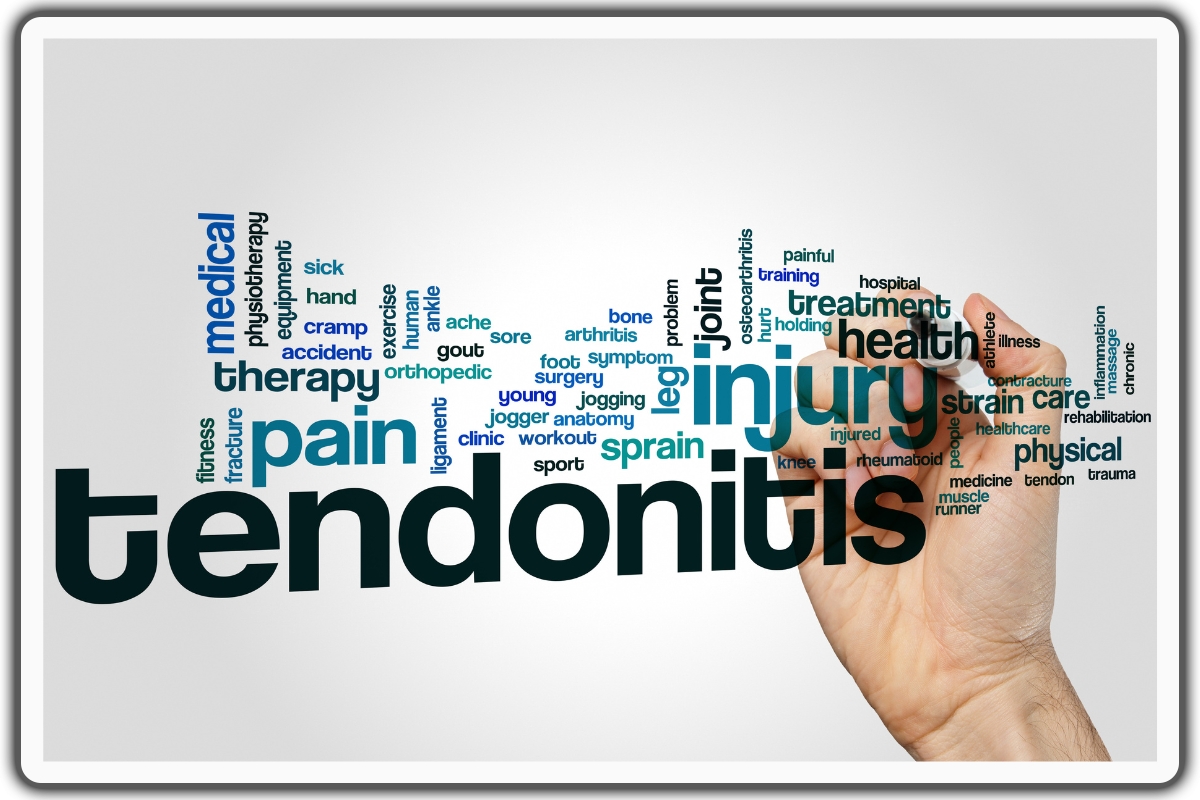
Understanding Tendons in the Foot: Causes, Symptoms, and Treatment Options
Tendons in the foot play a critical role in enabling movement, providing stability, and supporting the arch.
These fibrous tissues connect muscles to bones, allowing the transfer of force necessary for activities like walking, running, and jumping.
Without healthy tendons, simple actions such as standing or maintaining balance become challenging.
What are Foot Tendons and How Do They Get Injured?
Foot tendons are tough yet flexible tissues that connect muscles to the bones in your feet. They are essential for helping your feet move, stay stable, and maintain balance.
Tendons work by transmitting the force from your muscles, allowing you to walk, run, jump, and carry out other everyday activities.
Movement: Tendons make it possible for your feet and toes to move smoothly and accurately.
Stability: They help keep your feet steady and aligned during activities.
Shock Absorption: Tendons work with muscles and bones to reduce impact and protect your feet from stress.
Common Types of Foot Tendonitis
Achilles tendonitis: inflammation of the Achilles tendon, which connects the calf muscle to the heel bone.
Posterior tibial tendonitis: inflammation of the posterior tibial tendon, which supports the arch of the foot.
Peroneal tendonitis: inflammation of the peroneal tendons, which run along the outer ankle bone.
Extensor tendonitis: inflammation of the extensor tendons, which connect the muscles to the bones in the foot.
Symptoms of Foot Tendonitis
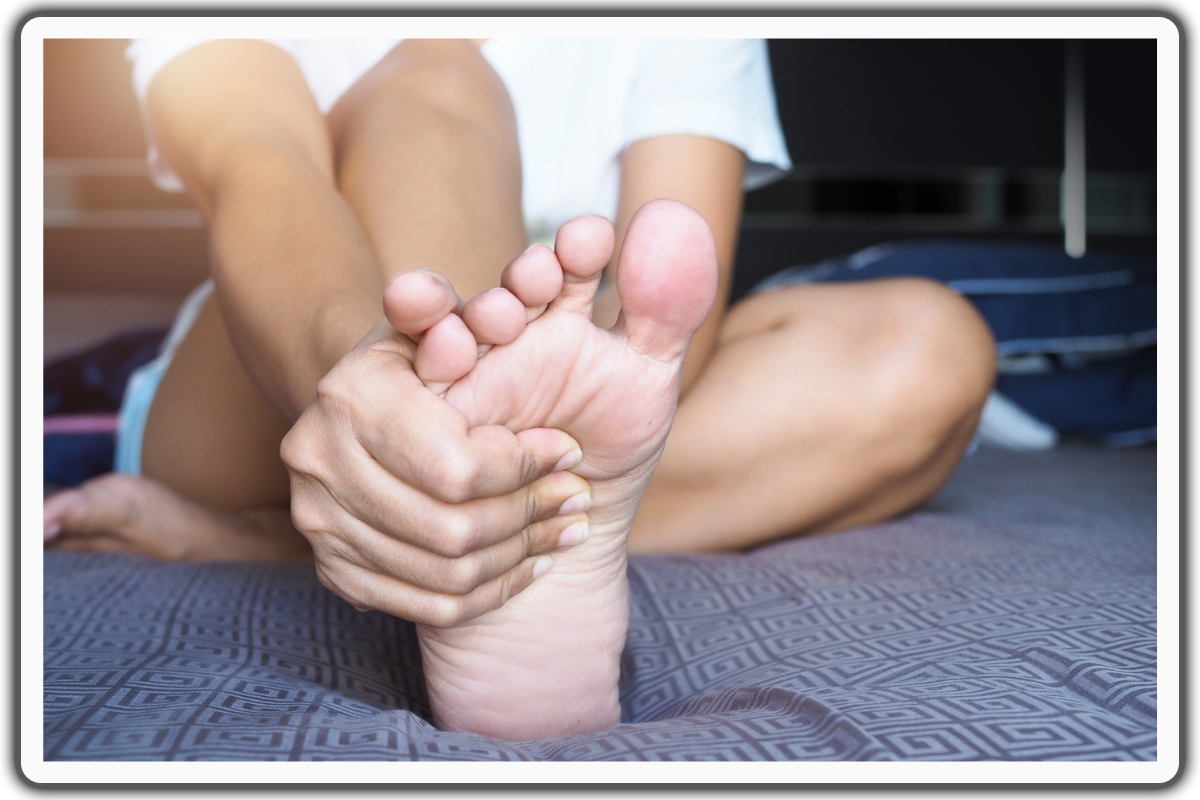
- Pain, swelling, and stiffness in the affected area.
According to medical expert authors Dr. Zilpah Sheikh and Marijke Vroomen Durning, RN, extensor tendonitis typically causes pain along the top of the foot (often under the shoelaces), along with swelling and sometimes a visible bump or sore spot on the tendon.
The tendon becomes weaker, making it less effective at transferring muscle force to the bones. (1)
Limited range of motion or difficulty walking or running.
A physical exam and review of symptoms are used to diagnose foot tendonitis. Imaging exams such as X-rays, MRIs, or CT scans may be ordered to confirm the diagnosis.
Causes of Foot Tendon Injuries
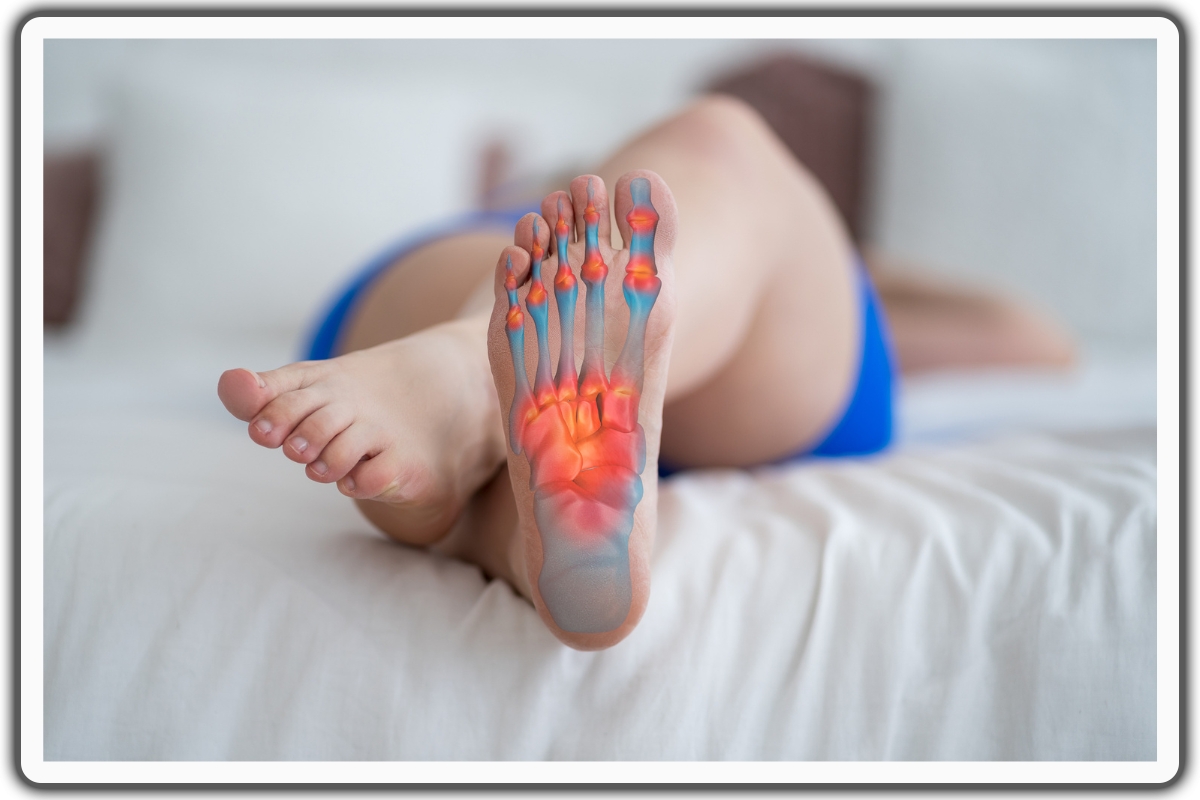
Overuse or Repetitive Strain (2)
○ Repeated stress on tendons from physical activities (e.g., running, dancing, or walking long distances).
Training Errors (2)
○ Sudden increases in activity intensity, frequency, or duration without adequate rest or conditioning.
○ Use of inappropriate training surfaces, such as uneven or hard floors.Poor Flexibility and Weakness (2)
○ Tight calf muscles or weak surrounding muscles can place extra stress on foot tendons.
Biomechanical Issues (2)
○ Abnormal gait cycles (e.g., excessive pronation or supination).
○ Misalignments or deformities like flat feet or high arches.Inadequate Recovery (2)
○ Tendons don’t have time to heal properly after intense activity, leading to degeneration.
Improper Footwear (2)
○ Shoes that don’t provide adequate support for the specific activity or foot type.
Trauma or Injury (2)
○ Acute injuries like sprains or stepping awkwardly (e.g., stepping into a hole).
○ Ankle tendon injuries can occur when tendons near the ankle are overstretched or torn, often impacting the function and stability of the foot.
Age and Degeneration (2)
○ Tendons weaken and lose elasticity with age, making them more prone to injury.
Specific Activities or Professions (2)
○ Ballet dancers (linked to flexor hallucis longus tendinopathy).
○ Runners and athletes (linked to Achilles tendon injuries).Medical or Lifestyle Factors (2)
○ Smoking reduces blood flow and tendon repair.
○ Side effects from medications (e.g., fluoroquinolone antibiotics).
○ Obesity or excess weight adds strain to tendons.
Treatment Options for Foot Tendonitis
RICE Method:
○ Rest: Avoid activities that cause pain.
○ Ice: Apply ice packs to reduce swelling.
○ Compression: Use wraps or braces to support the foot.
○ Elevation: Keep the foot raised to decrease swelling.Physical Therapy:
○ Exercises to improve strength, flexibility, and tendon health.
Bracing or Support:
○ Wear a brace or special shoe inserts (orthotics) to protect the tendon.
Corticosteroid Injections:
○ Used to reduce pain and inflammation in severe cases.
Surgical Options (For Severe Cases)
Tendon Repair Surgery:
○ Damaged tissue is removed, and the tendon is repaired.
Tendon Transfer Surgery:
○ A healthy tendon from another body part replaces the damaged one.
Exercises for Foot Tendons
1 - Ankle Circles
For this exercise, kindly use a sturdy chair.
Begin in an upright sitting position on a chair with your knees bent and feet flat on the floor, maintaining good alignment with your head, shoulders, and hips. Lift and extend on leg at hip level with toes pointed towards the ceiling. Place your hands on your side for support. Engage your core and rotate your ankle in a slow, controlled, circular motion. Perform 10 rotations in a clockwise direction, then switch to counterclockwise. Lower your foot back to the floor and repeat the movement on the opposite foot.
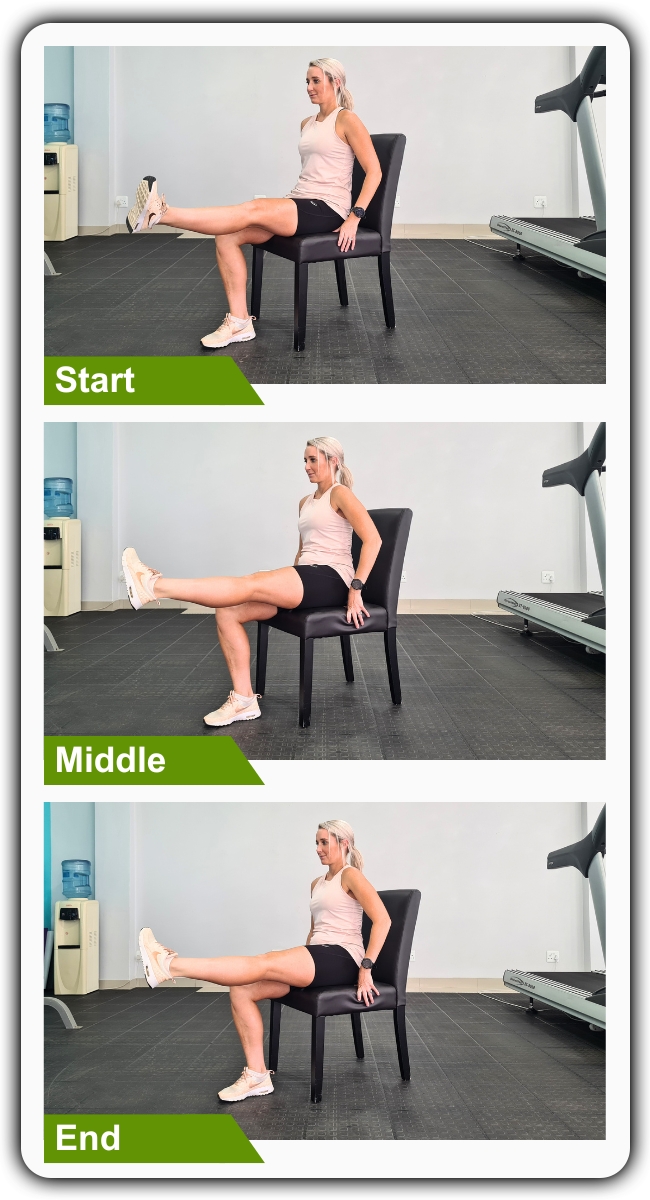
2 - Toe Extension Stretch
For this exercise, you may utilize a chair or a wall to support your balance if needed.
Begin in a standing position in front of a chair with your feet hip-width apart, maintaining good alignment with your head, shoulders, hips, and legs. Place your hands at the back of the chair to support your balance. Engage your core and take a small step back with one foot with your toes pressed on the floor. Gently press your toes into the ground and shift your weight slightly backward until you feel a stretch along the top of your foot. Hold this position for 15–20 seconds. Relax and repeat the movement on the opposite foot.
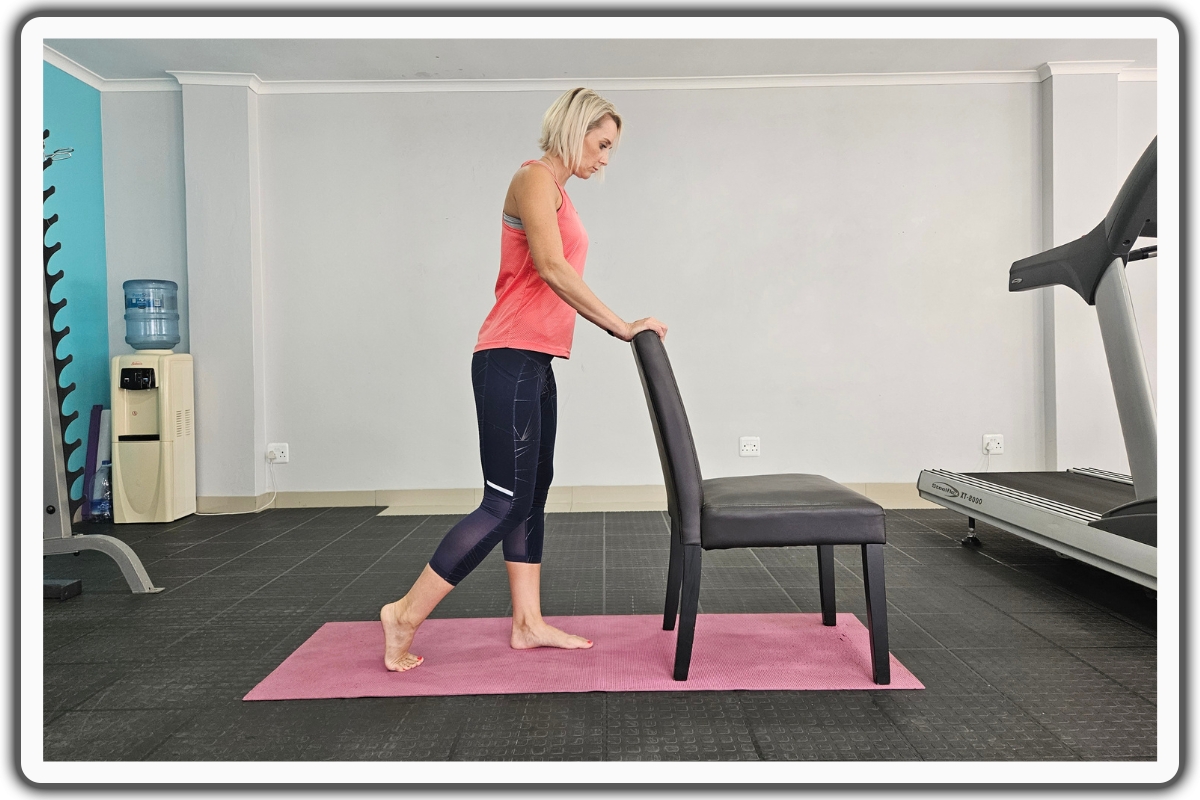
3 - Heel Raises
For this exercise, kindly use a sturdy chair.
Begin in an upright sitting position at the edge of a chair with your knees bent and feet flat on the floor, maintaining good alignment with your head, shoulders, and hips. Place your hands on your lap. Engage your core and slowly lift your heels off the ground, shifting your weight onto the balls of your feet. Hold this position for a few seconds, feeling the activation in your calves. Lower your heels back to the floor in a controlled motion. Repeat the movement for 10–15 repetitions.
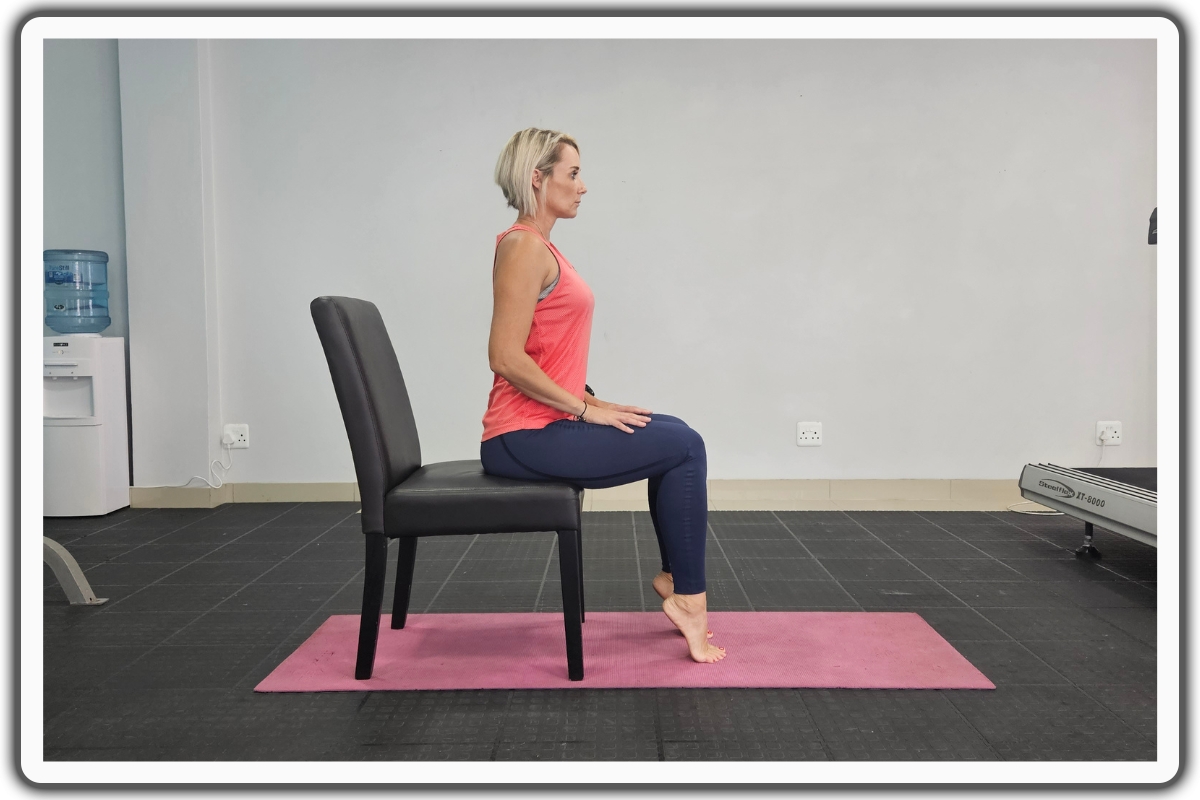
Key Tendons in the Foot
Achilles Tendon
○ Connects calf muscles to the heel bone.
○ Essential for activities like walking, running, and jumping.Posterior Tibial Tendon
○ Supports the arch of the foot and helps with stability.
○ Runs along the inside of the ankle.Peroneal Tendons
○ Located on the outer side of the foot.
○ Help stabilize the ankle and support side-to-side movements.Flexor Tendons
○ Allow your toes to curl and grip surfaces.
○ Important for balance and walking.Extensor Tendons
○ Help lift your toes and aid in walking or running.
○ Located on the top of the foot.Plantar Fascia
○ Though not a tendon, this fibrous band supports the arch and absorbs shock.
Common Types of Foot Tendonitis
Achilles Tendonitis: Swelling and pain in the Achilles tendon, which connects the calf muscle to the heel bone.
Posterior Tibial Tendonitis: Swelling and pain in the posterior tibial tendon, which supports the arch of the foot and keeps it stable. If not treated, it can lead to Posterior Tibial Tendon Dysfunction (PTTD), a condition where the tendon weakens or tears, causing pain, swelling, and a flattened arch (flatfoot).
Peroneal Tendonitis: Swelling and pain in the peroneal tendons, which run along the outer ankle and help with balance and side-to-side movements.
Extensor Tendonitis: Swelling and pain in the extensor tendons on the top of the foot, which help lift the toes when walking or running.
Conclusion

Foot tendonitis is a common condition that can cause pain and limited mobility. Understanding the causes, symptoms, and treatment options can help individuals manage and prevent foot tendonitis. Seeking medical attention early can promote healing and prevent complications.
FAQs
What are the painful tendons in the foot?
The most commonly painful tendons in the foot include:
- Achilles tendon: At the back of the ankle.
- Posterior tibial tendon: Along the inside of the foot and ankle.
- Peroneal tendons: On the outer side of the ankle.
- Extensor tendons: On the top of the foot.
- Flexor tendons: On the underside of the foot.
Do foot tendons heal on their own?
Foot tendons can heal independently if the injury is mild and given proper care, such as rest, ice, and supportive measures like braces. However, severe injuries or chronic conditions may require medical treatment, including physical therapy or, in some cases, surgery.
Does ice make tendonitis worse?
Ice does not make tendonitis worse. In fact, it is often recommended to reduce swelling and numb pain during the early stages of injury. However, avoid applying ice for too long (no more than 15–20 minutes at a time) to prevent skin irritation.
Should I massage foot tendonitis?
Gentle massage can help improve blood flow and reduce stiffness in the affected area, but it should be done carefully. Avoid pressing too hard, as this may worsen pain or inflammation. Always consult a healthcare professional before trying massage, especially if the tendon is very painful.
References
KW for references:
(1) The tendon - https://pubmed.ncbi.nlm.nih.gov/19904895/
(2) Causes of Foot Tendon Injuries - https://pubmed.ncbi.nlm.nih.gov/19904895/
References:
(1) Bordoni, B., Black, A. C., & Varacallo, M. (2023). Anatomy, tendons. In StatPearls. StatPearls Publishing. https://www.ncbi.nlm.nih.gov/books/NBK513237/
(2) Simpson, M. R., & Howard, T. M. (2009). Tendinopathies of the foot and ankle. American Family Physician, 80(10), 1107–1114. https://pubmed.ncbi.nlm.nih.gov/19904895/
